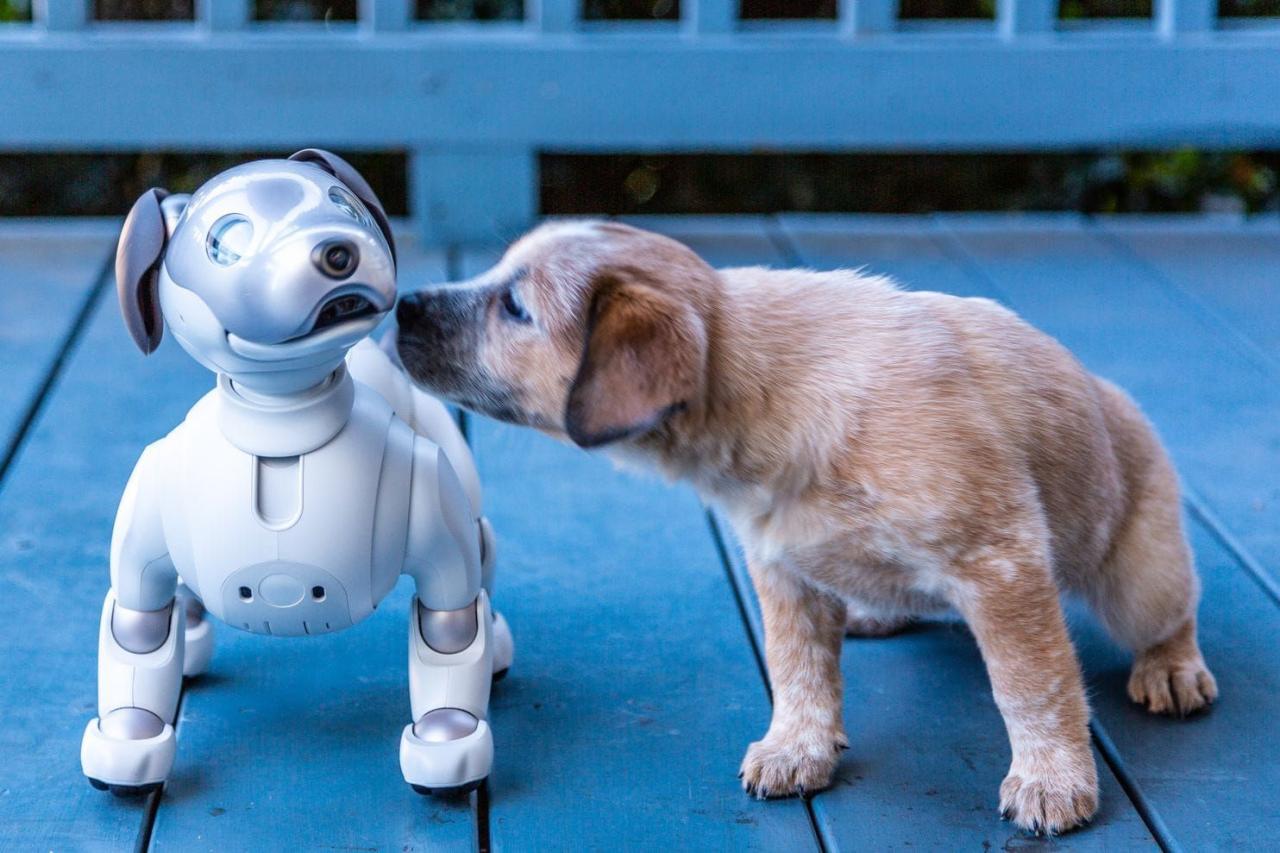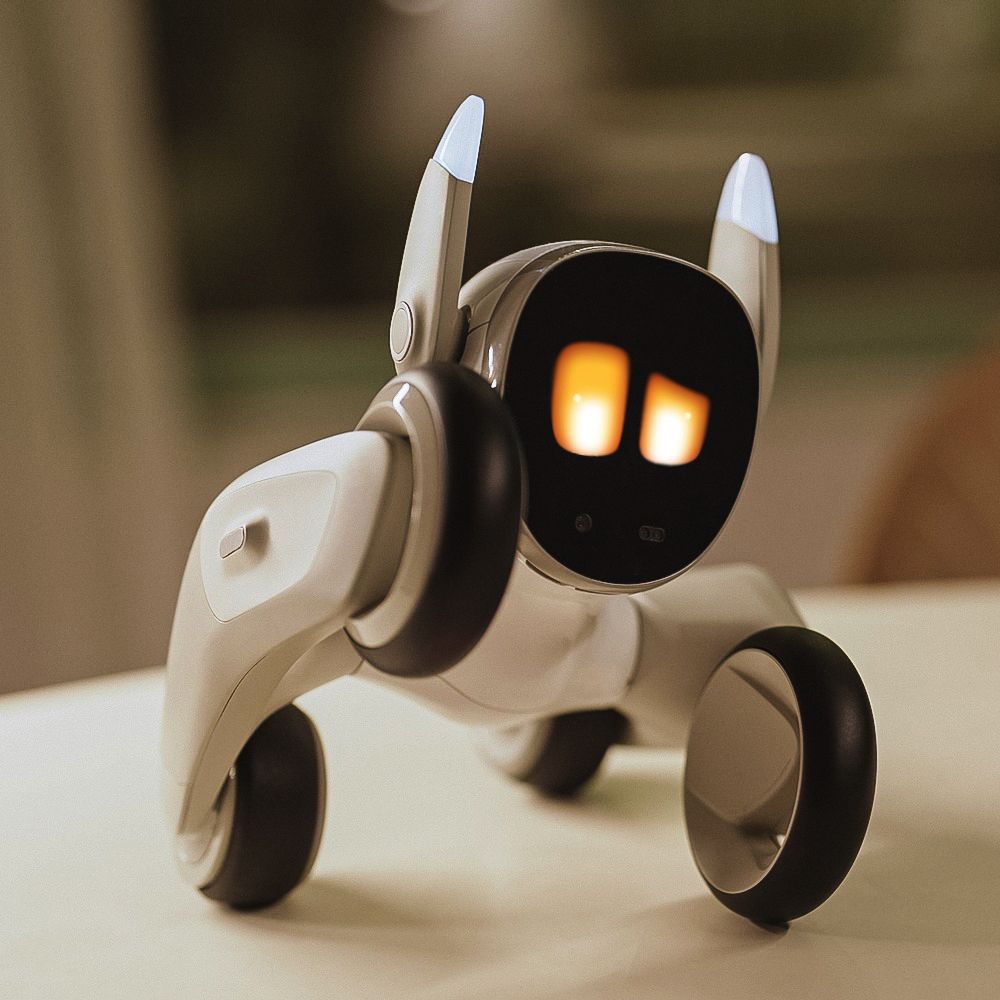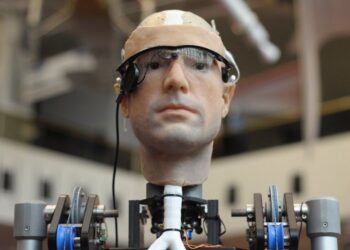The relentless march of technological progress continues to redefine industries and transform daily life, with robotics at the forefront of this profound evolution. Far beyond the rigid, industrial arms of yesteryear, today’s robots are increasingly characterized by their intelligence, adaptability, and collaborative capabilities, ushering in an era where smart automation soars. This isn’t merely about replacing human labor; it’s about augmenting human potential, tackling complex challenges, and achieving unprecedented levels of efficiency, precision, and safety across a multitude of sectors. From self-navigating delivery drones to AI-powered surgical assistants, the rapid advancements in robotics are reshaping the very fabric of our operational and personal landscapes.
The Evolution of Automation: From Simple Machines to Intelligent Companions
To fully grasp the significance of modern robotics, it’s crucial to understand the historical trajectory of automation, a journey marked by increasing sophistication and autonomy.
A. The Dawn of Mechanical Automation (Industrial Revolution)
The earliest forms of automation emerged during the Industrial Revolution, focusing on mechanical efficiency and repetitive tasks.
- Fixed-Function Machines: These were purpose-built machines designed to perform specific, repetitive tasks in a production line (e.g., spinning jennies, power looms). They significantly increased output but lacked flexibility.
- Early Programmable Machines: The mid-20th century saw the advent of numerically controlled (NC) machines and early industrial robots. These could be programmed to perform a sequence of movements, primarily in manufacturing, but their intelligence was rudimentary, and their environment had to be highly controlled.
- Limitations: These early forms were rigid, often dangerous, and lacked sensory awareness. They couldn’t adapt to variations in tasks or environments, requiring extensive human oversight and safety measures. Their primary goal was volume production, not intelligence or adaptability.
B. The Rise of Industrial Robotics (Late 20th Century)
The latter half of the 20th century cemented the role of industrial robots, particularly in manufacturing.
- Robotic Arms: These multi-axis manipulators became staples in automotive factories, performing tasks like welding, painting, and assembly. They offered greater flexibility than earlier fixed machines but were still typically caged off from human workers for safety reasons.
- Increased Speed and Precision: Continuous improvements in mechanics, motors, and control systems led to robots that could perform tasks with incredible speed and sub-millimeter precision, driving quality and efficiency in mass production.
- Focus on Repetitive Tasks: Their strength lay in performing repetitive, dirty, dull, and dangerous (3D) tasks that were unsuitable or inefficient for human workers. However, their intelligence remained largely in their programming, not in their perception or decision-making.
C. The Era of Smart Automation: Modern Robotics Emerges
The 21st century has witnessed an explosion in robotic capabilities, driven by exponential advancements in computing power, sensors, artificial intelligence, and network connectivity. This defines the current era of smart automation.
- Enhanced Sensory Perception: Modern robots are equipped with an array of sophisticated sensors, including LiDAR, cameras (2D and 3D vision), force-torque sensors, haptic feedback, and acoustic sensors. This allows them to “see,” “feel,” and “hear” their environment with unprecedented detail.
- Artificial Intelligence (AI) and Machine Learning (ML): AI is the brain of modern robotics. ML algorithms enable robots to:
- Learn from Data: Improve performance and adapt to new situations through experience, rather than explicit reprogramming.
- Perceive and Understand: Interpret complex sensory data (e.g., recognize objects, understand human gestures).
- Make Decisions: Autonomously plan paths, manipulate objects, and interact with dynamic environments.
- Advanced Mobility and Dexterity: Beyond fixed arms, robots now boast diverse mobility options (wheeled, tracked, legged, aerial) and increasing dexterity, allowing them to perform complex manipulation tasks that mimic human fine motor skills.
- Human-Robot Collaboration (Cobots): Perhaps the most significant shift. Instead of being isolated, modern robots are designed to work safely alongside humans, augmenting their capabilities rather than replacing them entirely.
- Connectivity and Cloud Robotics: Robots are increasingly connected to cloud platforms, allowing them to leverage cloud-based AI processing, share data for collective learning, and receive real-time updates and instructions.
This profound evolution underscores that today’s robots are not just machines; they are intelligent, perceptive, and often collaborative entities that are redefining the boundaries of automation.
Core Pillars of Modern Smart Automation
The advancements enabling smart automation are built upon several interdependent technological pillars. Understanding these is key to appreciating the capabilities of today’s robots.
A. Artificial Intelligence and Machine Learning (AI/ML)
AI is the brain and learning mechanism that imbues robots with intelligence.
- Computer Vision: Enables robots to “see” and interpret their surroundings. This includes object recognition, facial recognition, pose estimation, and 3D mapping, allowing robots to navigate complex environments, identify items, and interact with them precisely.
- Natural Language Processing (NLP) / Speech Recognition: Allows robots to understand and respond to human voice commands, facilitating more intuitive human-robot interaction in various settings (e.g., customer service robots, assistive robots).
- Reinforcement Learning (RL): A powerful ML paradigm where robots learn optimal behaviors through trial and error, by receiving rewards or penalties for their actions. This is crucial for tasks like complex manipulation, navigation in unknown environments, and playing games.
- Predictive Analytics: ML models analyze sensor data and historical performance to predict equipment failures, optimize maintenance schedules, or anticipate user needs, enabling proactive robotic interventions.
B. Advanced Sensor Technologies
Robots gain their perception from a sophisticated array of sensors, providing critical data about their internal state and external environment.
- LiDAR (Light Detection and Ranging): Creates highly accurate 3D maps of environments by emitting laser pulses and measuring the time it takes for them to return. Essential for autonomous navigation and obstacle avoidance.
- Force-Torque Sensors: Located in robotic joints or grippers, these detect forces and torques applied by or to the robot. Critical for delicate manipulation, human-robot collaboration (safety), and assembly tasks requiring precise pressure.
- Haptic Feedback: Allows robots to “feel” textures, grip strength, and slippage, enhancing their ability to handle diverse objects.
- Ultrasonic and Infrared Sensors: Used for proximity detection, short-range obstacle avoidance, and distance measurement.
- IMUs (Inertial Measurement Units): Provide data on orientation, velocity, and gravitational forces, crucial for stable movement of mobile and aerial robots.
C. Edge Computing and 5G Connectivity
The proliferation of sensors and the demand for real-time decision-making have made advanced connectivity and localized processing crucial.
- Edge Computing: Processing data closer to its source (on the robot itself or a nearby edge device) reduces latency, bandwidth requirements, and enables faster, more autonomous decision-making without relying solely on cloud connectivity. This is vital for safety-critical applications like autonomous driving.
- 5G Networks: Provide ultra-low latency, high bandwidth, and massive connectivity, supporting large fleets of robots, real-time data streaming from sensors, and rapid communication for synchronized operations. 5G is a game-changer for remotely controlled robots and cloud robotics.
D. Collaborative Robotics (Cobots)
Cobots represent a significant evolution, designed specifically to interact with humans in shared workspaces.
- Safety Features: Equipped with advanced sensors (e.g., force-limiting, vision systems) that allow them to detect human presence and stop or reduce speed to prevent collisions, ensuring safe interaction.
- Ease of Programming: Often feature intuitive interfaces (e.g., ‘teach by demonstration’) making them easier for non-experts to program.
- Augmentation, Not Replacement: Their purpose is to augment human capabilities, assisting with repetitive, ergonomic, or heavy tasks, allowing humans to focus on higher-value, more complex work.
E. Cloud Robotics and Centralized Intelligence
While edge computing handles immediate needs, the cloud plays a vital role for broader intelligence.
- Collective Learning: Data from multiple robots can be aggregated in the cloud, allowing AI models to learn from a vast dataset and improve overall robotic fleet performance (e.g., navigation maps, object recognition libraries).
- Heavy Computation: Complex AI training, large-scale simulations, and optimization algorithms can leverage the vast computational resources of the cloud.
- Remote Management and Updates: Cloud platforms facilitate remote monitoring, diagnostics, and over-the-air software updates for robotic fleets, simplifying maintenance and ensuring robots always have the latest capabilities.
Transformative Applications: Where Smart Automation Soars
The convergence of these technological pillars is enabling smart automation to make significant inroads across a diverse array of industries, each experiencing unique and profound benefits.
A. Manufacturing and Logistics: Precision and Throughput
This sector continues to be a leading adopter, but with new emphasis on flexibility and collaboration.
- Flexible Assembly Lines: Cobots working alongside humans in dynamic assembly tasks, adapting to product variations with ease. This moves beyond rigid automation.
- Automated Guided Vehicles (AGVs) and Autonomous Mobile Robots (AMRs): Revolutionizing warehouse logistics by autonomously transporting goods, optimizing inventory management, and fulfilling orders with unprecedented speed and accuracy. AMRs are more flexible than AGVs, able to navigate dynamic environments.
- Precision Machining and Welding: Robots performing intricate cuts, welds, and surface treatments with sub-millimeter precision, ensuring higher quality and reduced material waste.
- Quality Inspection: AI-powered vision systems on robotic arms conducting rapid and accurate quality checks, identifying defects that human eyes might miss, ensuring product consistency.
B. Healthcare: Assistance and Precision Medicine
Robotics is making significant strides in healthcare, enhancing surgical precision, aiding patient care, and improving lab efficiency.
- Surgical Robotics: Systems like the Da Vinci surgical system allow surgeons to perform complex procedures with greater precision, smaller incisions, and faster patient recovery times. Future systems will incorporate more AI for real-time guidance.
- Hospital Logistics: Robots automating the delivery of medications, meals, and medical supplies within hospitals, freeing up staff for patient care.
- Rehabilitation Robotics: Exoskeletons and robotic devices assisting patients with physical therapy and rehabilitation, enabling faster recovery and improved mobility.
- Pharmacy Automation: Robots precisely dispensing medications, reducing human error and improving efficiency in pharmacies.
C. Agriculture: Smart Farming for Sustainability
Robotics is transforming farming, addressing labor shortages, optimizing resource use, and enhancing crop yields.
- Autonomous Tractors and Harvesters: Self-driving agricultural machinery performing tasks like planting, spraying, and harvesting with precision, reducing fuel consumption and optimizing crop management.
- Precision Spraying and Weeding Robots: Robots using AI vision to identify weeds and spray only specific plants, significantly reducing pesticide and herbicide use, leading to more sustainable farming.
- Crop Monitoring and Health Assessment: Drones and ground robots equipped with sensors gathering data on crop health, soil conditions, and irrigation needs, providing farmers with actionable insights.
- Automated Picking: Robots picking delicate fruits and vegetables with precision, reducing labor costs and minimizing damage.
D. Retail and Hospitality: Enhanced Customer Experience
Robots are increasingly visible in customer-facing roles, improving efficiency and enhancing visitor experiences.
- Service Robots: Robots greeting customers, providing information, and even serving food in restaurants or hotels, especially in regions facing labor challenges.
- Inventory Management: Robots autonomously scanning shelves to check stock levels, identify misplaced items, and ensure accurate inventory, improving efficiency in retail.
- Last-Mile Delivery: Autonomous delivery robots and drones transporting packages to customers, offering faster and potentially more cost-effective delivery options, particularly in urban areas.
- Cleaning and Sanitation: Autonomous cleaning robots maintaining cleanliness in large public spaces like airports, malls, and hotels, improving hygiene standards.
E. Construction: Safety and Efficiency on Site
While a challenging environment, robotics is beginning to make a significant impact on construction.
- Automated Bricklaying and Welding: Robots performing repetitive, labor-intensive, and hazardous tasks with high precision and speed.
- Site Monitoring and Inspection: Drones and mobile robots conducting regular site surveys, monitoring progress, identifying safety hazards, and performing structural inspections.
- Material Handling and Logistics: Robots autonomously moving heavy or bulky materials around construction sites, reducing manual labor and improving safety.
- 3D Printing Buildings: Large-scale robotic 3D printers constructing building components or entire structures on-site, revolutionizing construction methods.
Challenges and Ethical Considerations in the Rise of Smart Automation
Despite the immense promise, the widespread adoption of smart automation and robotics is accompanied by significant challenges and profound ethical considerations that society must actively address.
A. High Initial Investment and Complex Integration
The upfront cost of acquiring sophisticated robotic systems, along with the necessary software, specialized infrastructure, and integration with existing legacy systems, can be substantial. For many businesses, particularly Small and Medium-sized Enterprises (SMEs), this represents a significant financial hurdle. Demonstrating a clear and rapid Return on Investment (ROI) can be challenging, especially for highly customized or non-repetitive applications, requiring careful business case justification.
B. Technical Complexity and Skill Gap
Implementing, operating, and maintaining modern robotic systems demands a deep level of technical expertise. This includes knowledge in robotics engineering, artificial intelligence, software development, data science, and systems integration. Many organizations face a significant skill gap in these areas, requiring substantial investment in training existing employees or hiring new specialized talent. The complexity of troubleshooting advanced autonomous systems can also be a challenge.
C. Workforce Transformation and Job Displacement Concerns
Perhaps the most significant societal concern revolves around the impact on employment. While smart automation creates new roles (robotics engineers, AI trainers, maintenance technicians), it also automates many routine, repetitive tasks, potentially leading to job displacement in certain sectors. This raises questions about retraining programs, universal basic income, and the equitable distribution of automation’s benefits. Managing this transition ethically and socially responsibly is paramount to avoid widespread economic disruption and societal unrest.
D. Safety, Regulation, and Liability
The deployment of increasingly autonomous and powerful robots, especially in shared human environments (factories, public spaces, roads), raises critical safety concerns. Ensuring that robots operate reliably and safely, even in unpredictable conditions, is a complex engineering challenge. Developing and enforcing new safety regulations and legal frameworks for autonomous systems, including determining liability in the event of accidents, are crucial and ongoing efforts. Existing laws are often ill-equipped to handle truly autonomous entities.
E. Ethical Dilemmas of AI and Autonomy
As robots become more intelligent and autonomous, profound ethical dilemmas emerge. These include:
- Decision-Making: How should robots be programmed to make decisions in moral quandaries (e.g., in autonomous vehicles, in military applications)?
- Bias and Fairness: Ensuring that AI algorithms driving robotic behavior are free from human biases present in training data, preventing discriminatory outcomes.
- Transparency and Explainability: Understanding why an AI-powered robot made a particular decision, especially in critical applications.
- Accountability: Who is ultimately responsible when an autonomous system makes a mistake or causes harm?
F. Data Privacy and Cybersecurity Risks
Smart robots are data-hungry, collecting vast amounts of information about their environment, operations, and often, human interactions. This raises significant data privacy concerns, especially in public or personal settings. Furthermore, networked robotic systems present tempting targets for cybersecurity attacks. A compromised robot or fleet could lead to industrial espionage, physical damage, or even autonomous weapons, making robust cybersecurity measures critical.
G. Adaptability to Unstructured Environments
While modern robots are more adaptable than their predecessors, highly unstructured, dynamic, and unpredictable environments (like a construction site, a complex natural disaster zone, or a chaotic public space) still pose significant challenges for full autonomy. Human intervention is often still required for novel situations or complex problem-solving.
Best Practices for Embracing Smart Automation and Robotics
For organizations looking to strategically integrate smart automation and robotics and maximize their benefits, a well-planned, ethical, and iterative approach is essential.
A. Define Clear Use Cases and Business Value
Before investing in robotics, clearly identify specific pain points, repetitive tasks, or hazardous environments where robots can deliver measurable business value. Start with pilot projects that have a high likelihood of success and a clear ROI. Avoid implementing robotics just for the sake of technology; focus on solving real-world problems.
B. Invest Heavily in Workforce Development and Reskilling
Recognize that robots are tools, and humans will remain central to operations. Prioritize investing in comprehensive reskilling and upskilling programs for your existing workforce. Train employees to operate, program, monitor, and maintain robotic systems. Foster a culture of human-robot collaboration, emphasizing that robots augment capabilities rather than replace jobs entirely. Transparent communication is key to managing change.
C. Prioritize Safety and Compliance from Design to Deployment
Safety must be non-negotiable. Design robotic systems with built-in safety features (e.g., emergency stop buttons, force-limiting sensors, vision-based human detection). Adhere strictly to existing safety regulations and proactively engage with industry bodies and regulators to help shape new standards for human-robot interaction. Conduct thorough risk assessments and establish clear operational protocols.
D. Embrace Iterative Deployment and Continuous Improvement
Adopt an iterative and agile approach to robotics deployment. Start with a minimum viable robotic system (MVR) and continuously gather feedback, monitor performance, and refine the system based on real-world data. Implement continuous integration and continuous deployment (CI/CD) pipelines for robotic software to ensure rapid updates and improvements.
E. Build for Observability and Data-Driven Optimization
Implement comprehensive observability for your robotic systems. This includes collecting granular metrics on robot performance, operational efficiency, and error rates. Centralize logs and use distributed tracing for complex robotic workflows. Leverage the data collected by robots to gain insights, identify bottlenecks, predict maintenance needs, and continuously optimize their performance through AI/ML models.
F. Secure the Robotic Ecosystem
Given the increasing connectivity of robots, robust cybersecurity measures are critical. Secure communication channels, implement strong authentication and authorization, encrypt data at rest and in transit, and regularly audit robotic systems for vulnerabilities. Protect intellectual property embodied in robotic programming and ensure the integrity of operational data.
G. Foster a Culture of Innovation and Experimentation
For organizations to stay competitive in the rapidly advancing field of robotics, they must cultivate a culture of innovation and controlled experimentation. Be willing to pilot new robotic technologies, learn from both successes and failures, and adapt quickly. Encourage cross-functional teams to explore novel applications of robotics and stay abreast of the latest research and industry trends.
H. Consider Robotics as a Service (RaaS)
For businesses hesitant about the high upfront capital expenditure, explore Robotics as a Service (RaaS) models. This allows organizations to rent or subscribe to robotic capabilities as needed for specific tasks or projects, reducing financial risk and providing access to cutting-edge technology without the burden of ownership, maintenance, and rapid obsolescence.
The Future Trajectory of Smart Automation and Robotics
The journey of smart automation is far from complete. The coming decades promise even more astounding advancements that will profoundly reshape industries and daily life.
A. Hyper-Autonomous Systems and Swarm Intelligence
Expect to see increasingly hyper-autonomous systems capable of operating for extended periods without human intervention, making complex decisions in dynamic environments. The concept of swarm robotics, where large numbers of simple, inexpensive robots collaborate to achieve complex tasks, will become more prevalent, particularly in logistics, construction, and environmental monitoring, offering scalability and resilience through collective intelligence.
B. General Purpose Robots and Enhanced Dexterity
While many robots today are task-specific, future advancements will lead to more general-purpose robots capable of performing a wider variety of tasks, often requiring sophisticated manipulation. Significant breakthroughs in robotic dexterity (fine motor skills, multi-fingered grippers) will enable robots to handle delicate, irregularly shaped objects and perform complex assembly operations currently requiring human hands.
C. Proactive Human-Robot Co-Creation and Empathy
The future will see robots moving beyond mere collaboration to true co-creation with humans, especially in design, art, and research. Developments in AI will also lead to robots with enhanced capabilities for empathy and social interaction, making them more effective in roles like elder care, education, and customer service, capable of recognizing and responding to human emotions and intentions.
D. Bio-Inspired Robotics and Soft Robotics
Nature continues to be a profound source of inspiration. Bio-inspired robotics will lead to robots with capabilities like climbing, jumping, flying, and navigating complex terrains more efficiently, mimicking biological organisms. Soft robotics, utilizing compliant materials, will enable robots to interact more safely and delicately with humans and fragile objects, opening new applications in healthcare and personal assistance.
E. Decentralized Robotics and Edge AI Networks
With the proliferation of edge computing and 5G, robotic intelligence will become increasingly decentralized. Fleets of robots will form intelligent Edge AI networks, performing real-time processing and making collaborative decisions locally, while only sending aggregated insights to the cloud. This reduces latency, enhances resilience, and ensures faster response times for critical applications.
F. Ethical AI and Regulatory Frameworks Maturation
As robots become more integrated into society, the development of robust ethical AI frameworks and comprehensive regulatory guidelines will become paramount. This includes establishing clear standards for accountability, transparency, privacy, and bias in robotic systems. Societal dialogue and international collaboration will be crucial to ensure that robotic advancements align with human values and serve the greater good.
G. Robotics as the Backbone of Future Infrastructure
Robots will become deeply embedded into the fabric of our physical infrastructure. From self-repairing bridges monitored by inspection drones to autonomous waste management systems in smart cities and automated logistics hubs that seamlessly handle goods, robots will be the invisible, intelligent workforce that maintains and optimizes the very environment we live in.
Conclusion
The advancement of robotics signals far more than just a technological upgrade; it marks a pivotal moment in human history, heralding an era where smart automation soars to new heights. By integrating cutting-edge artificial intelligence, advanced sensor technologies, pervasive connectivity, and collaborative capabilities, modern robots are fundamentally reshaping industries from manufacturing and healthcare to agriculture and construction. They are delivering unprecedented levels of efficiency, precision, and safety, while addressing critical challenges like labor shortages and environmental impact.
While the journey towards widespread robotic integration comes with its own set of complexities, including significant initial investment, the need for workforce reskilling, and crucial ethical considerations, the transformative benefits are too profound to ignore. Organizations that strategically embrace these innovations, prioritizing clear use cases, robust safety protocols, and continuous learning, will be at the vanguard of this new era. The future promises even more sophisticated and ubiquitous robotic systems that will seamlessly blend into our lives, augmenting human potential and building a more automated, intelligent, and ultimately, a more productive world.










